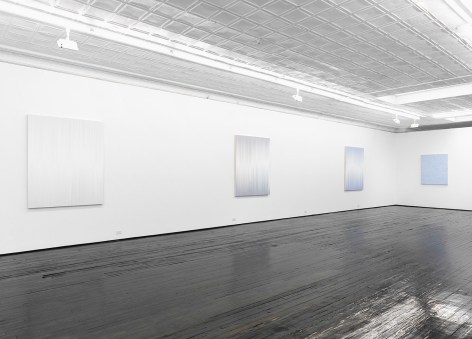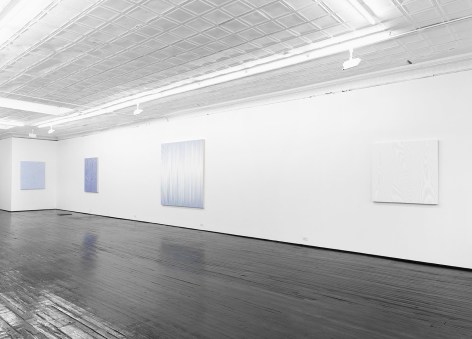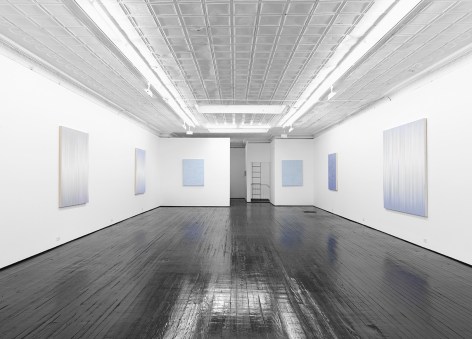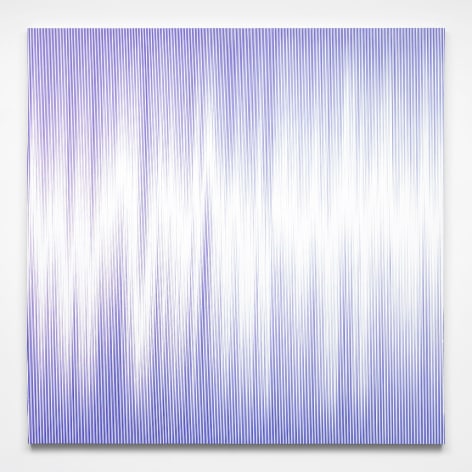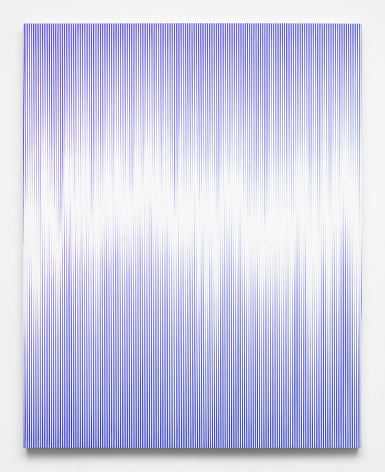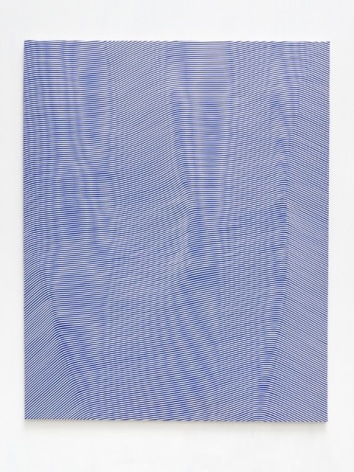Jack Hanley Gallery is pleased to present new works on canvas by New York-based painter Johnny Abrahams. In this new series, the artist traces the sweep of a technological evolution that began with silks and fiber arts and ends with today’s computers. The show itself echoes the progression—from the artist’s moiré paintings to a series of loom-inspired binary punch card pieces, and finally to works that address digital platforms as today’s image-making tools.
The initial motivations for the imagery arose from the artist’s interest in Ray Kurzweil's Law of Accelerating Returns. The visual language of the works in this show references a contemporary example of Kurzweil’s theory, which is founded on the principle that technological change is exponential. In 1801 Joseph Marie Jacquard invented a loom that used replaceable punch cards to control a sequence of operations. The ability to change the pattern of the loom's weave by simply changing cards was an important conceptual precursor to the development of computer programming. In the late 19th century, Herman Hollerith took the idea of using punched cards to store information a step further when he created a punched card tabulating machine which he used to input data for the 1890 U.S. Census. By 1959, IBM had invented the first fully transistorized computer, which received its input program instructions from a punch card reader capable of reading 800 punched cards per minute.
The content in these paintings take their visual languages from that arc of technological evolution by referencing patterns found in the fiber arts, specifically in watered silks, and moving on to the representation of information through binary languages. Each piece begins by dividing space into increasingly intricate geometries to form a progressively finer pattern. That pattern is then replicated and overlaid just out of phase with the initial language, generating a composition of artifacts and secondary images that become the subject of the painting.
Johnny Abrahams (b. 1979 Tacoma, Washington) lives and works in New York. Recent exhibitions include "Human Interface” at Hus Gallery, (London), “Subject to the Abstract” at Galerie van der Mieden (Brussels), “All Of Us Together” at Guerrero Gallery (San Francisco, CA), “Warp and Woof” at The Hole (New York, NY), “NOW-ISM: Abstraction Today” at Pizzuti Collection (Columbus, OH).
